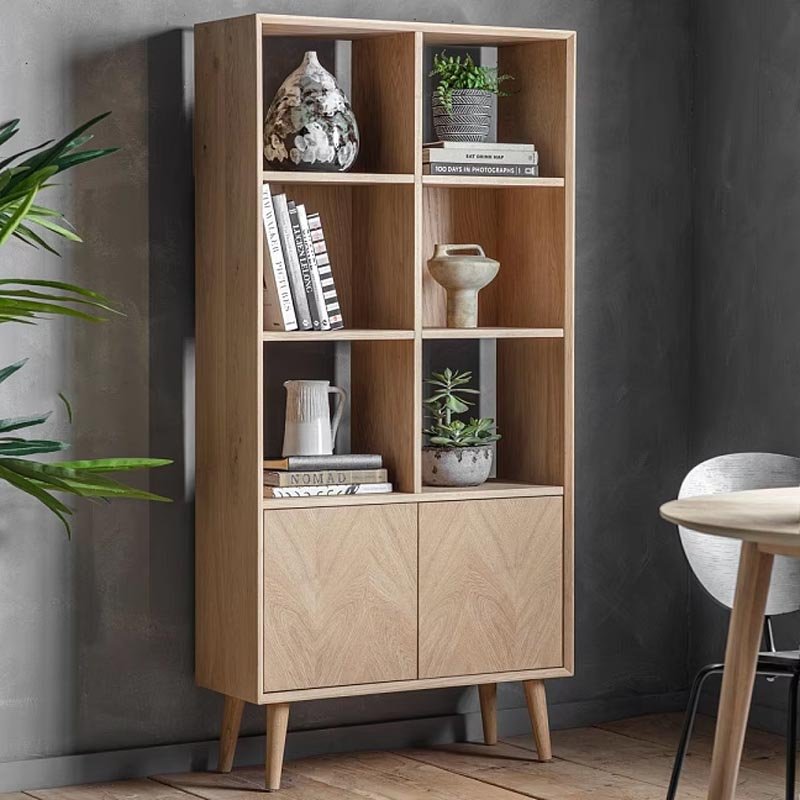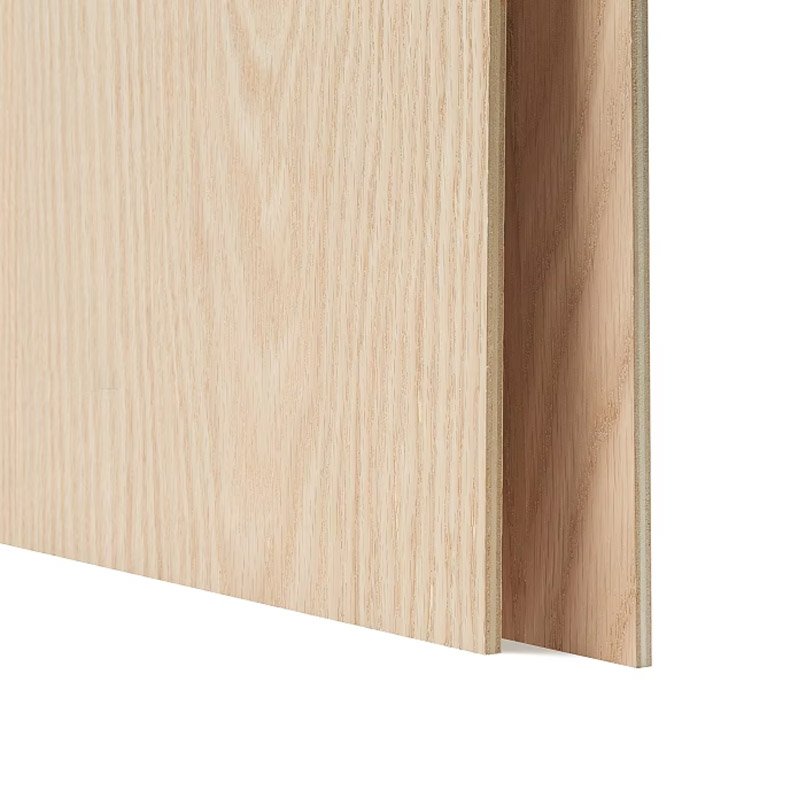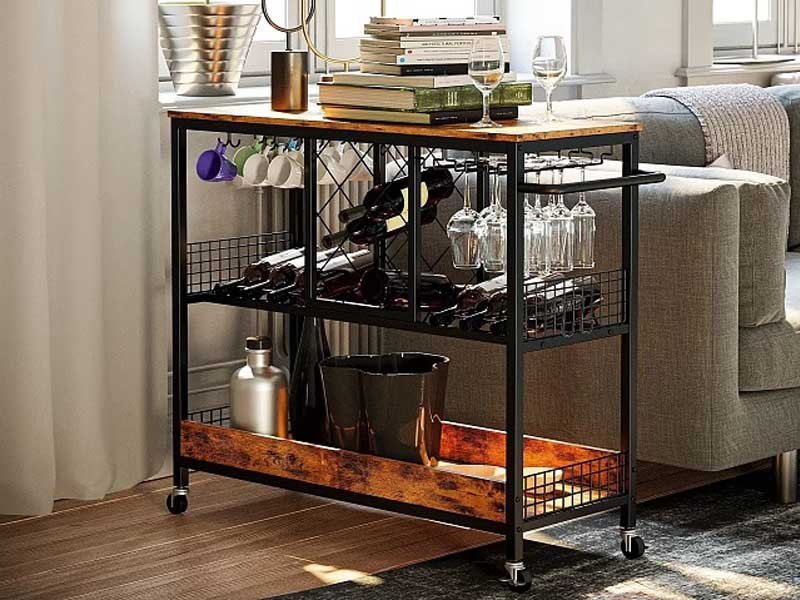Furniture projects can turn out uneven if I choose the wrong plywood. I've struggled with poor surfaces, warped panels, and finishes that just won't look right—until I learned the importance of "furniture grade."
Furniture grade plywood is distinguished by its superior veneer quality, even core construction, tight thickness tolerances, low-emission adhesives, and pre-sanded faces—making it reliable for both structural support and visible furniture surfaces.
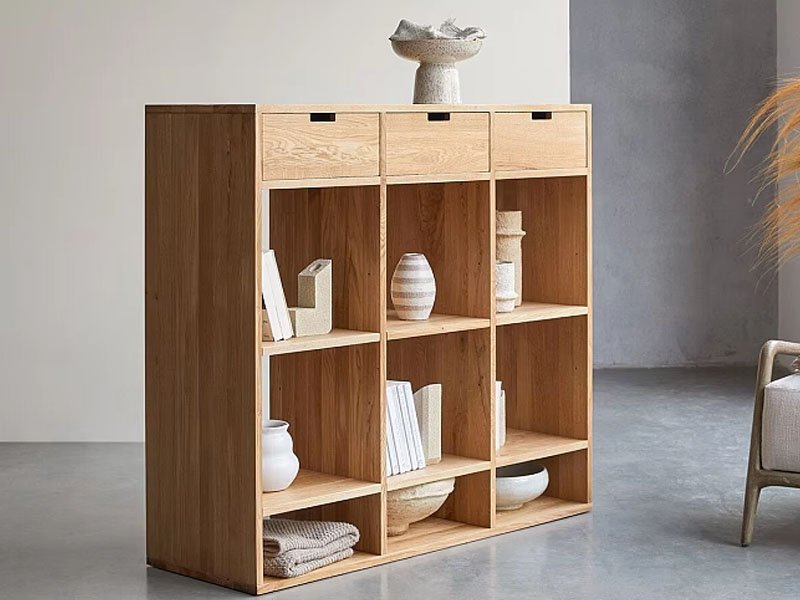
Understanding these factors helps me make informed choices and avoid costly mistakes. Next, I'll explore in detail how each characteristic of furniture grade plywood directly impacts the look, strength, and durability of my finished pieces.
1. How Can You Identify Top-Quality Plywood Surfaces?
Uneven finishes, visible defects, and extra prep work waste time and money. Many struggle to find plywood that meets high expectations. There is a proven way to spotsuperior surface and veneer quality1.
Top-quality plywood surfaces have minimal knots, uniform grain, and consistent color, with high-grade veneers free from patches, cracks, and open flaws. This ensures easy finishing, reliable appearance, and lasting value for furniture and visible projects.

What Sets Premium Plywood Veneers Apart?
I remember working on a home bookshelf project. I picked plywood with a flawless finish. Each panel had steady grain and soft color. The process was smooth from the first cut to the final coat. These are the real advantages of high-grade plywood.
High-grade plywood veneers are graded as A or AA. This is the industry code for face and back surfaces with very few natural defects. These standards set the best plywood apart from standard or utility grades. Let's break down what you can expect:
| Grade | Surface Defects | Grain Uniformity | Color Consistency | Prep Needed |
|---|---|---|---|---|
| AA | None visible | Excellent | Excellent | Minimal |
| A | Nearly none | Good | Good | Low |
| B | Small, allowed | Varied | Some variation | Moderate |
| C/D | Numerous, visible | Irregular | Mixed | High |
I always check for three main veneer signs:
- Minimal knots or filled holes. High grades will not have big visible patches or fillers.
- Uniform grain. Quality veneers look smooth from end to end.
- Even color. Better plywood keeps one tone, with no streaks or dark spots.
These features mean less time sanding or fixing. I can go straight to staining, painting, or clear finishing. It saves time and ensures a top-notch end product for cabinetry, shelving, or any exposed surface you want to showcase.
Face and Back Veneer Selection
Industry leaders pick out the best logs for face and back veneers. They slice them thin to preserve grain beauty and prevent warping. When I worked with B-grade panels, I saw how repairs and knots showed through even thick paint. With AA grade, every detail was crisp.
High-quality veneers2 are not just for looks. They help finishes come out even and free from surprises. Stains soak in without patchiness. Lacquers or varnishes shine without bumps or sunken spots.
Applications That Demand Surface Perfection
Plywood grades make a difference where surfaces will stay visible:
- Built-in cabinets or kitchen units.
- Floating shelves.
- Drawer faces and end panels.
- Table tops or desks.
These uses put every flaw out in the open. Lower grades are fine for structural parts. For anything on display, I always choose the best veneers I can find.
This is how you can identify plywood that meets the highest standards. Look for AA or A-level faces, check for uniformity, and trust your eye. Time saved on prep and finish is money saved. The visible impact will always stand out.
Top-quality plywood surfaces exhibit minimal knots, uniform grain, and consistent color, which result in easy finishing and a reliable appearance.True
The content clearly states that high-grade plywood has few knots, even grain, and steady color, which simplifies finishing and ensures a visually attractive result.
All plywood, regardless of grade, requires extensive sanding and defect repair before finishing.False
According to the content, high-grade (AA or A) plywood requires minimal prep work, while only lower grades need significant repair and sanding before finishing.
2. How Does Core Construction Impact Furniture Durability?
Cheaply made furniture can break or warp quickly. Poor core construction causes frustration and waste. Choosing plywood with a strong core solves these issues and keeps furniture stable for years.
The construction of the plywood core determines how well furniture resists warping, bowing, and loosening screws. High-quality core structures deliver even density, fewer defects, and better long-term stability.
Understanding Furniture Grade Plywood Cores
I spend a lot of time in woodworking shops and with furniture makers. I noticed that furniture built with cheaper, inconsistent plywood rarely lasts long. Edges chip, screws pull out, and surfaces warp. But when I started using furniture grade plywood3 with balanced cores, the difference was clear. Here is why core construction makes such a big impact.
What Is a Balanced Core?
Balanced core plywood means that every layer of wood—the “plies”—in the panel has about the same thickness and quality. These layers get bonded with high-strength adhesives under pressure.
| Quality Factor | Low-Grade Plywood | Furniture Grade Plywood |
|---|---|---|
| Layer Thickness | Uneven | Consistent |
| Core Density | Variable | Even |
| Voids (air pockets) | Common | Minimal to none |
| Edge Holding Strength | Poor | Excellent |
Balanced construction prevents one side from swelling or shrinking more than the other, which almost always leads to warping or bowing over time. Consistent layers distribute stress evenly. That helps maintain a flat, stable surface in any basic humidity.
The Role of Material Quality
Manufacturers use hardwood or high-grade softwood for the cores in furniture plywood. This choice depends on the strength and application needed. Fine furniture often uses birch, which is dense and resists splitting. Higher grades, like Baltic birch plywood4, go even further. These have virtually no voids. Each ply is solid wood. In my experience, screws bite into Baltic birch edges and hold tightly, even after years of use.
Why Even Density Matters
When the density of the plywood is consistent, physical stresses from humidity and weight distribute evenly. In low-quality products, gaps or soft spots in the core give way first. That leads to localized warping or edge splitting. Uniform panels hold shape during transport, assembly, and daily use. I watched one table made from cheap plywood bend dramatically after a month in a humid room. Another, built with furniture grade material, stayed flat for years under the same conditions.
Superior Screw-Holding and Edge Integrity
A solid core5 gives screws something to grip. In panels filled with voids, screws rip out quickly. Voids also make the edges prone to chipping. Balanced, void-free cores stand up to joining, fastening, and repeated assembly and disassembly. Cabinet makers need this kind of reliability, especially in modular or flat-pack pieces.
| Feature | Low-Grade Panel | Furniture Grade Panel |
|---|---|---|
| Screw Pull Resistance | Weak | Strong |
| Edge Chipping | Frequent | Rare |
| Long-Term Flatness | Poor | Excellent |
Final Thoughts
Strong core construction6 makes all the difference. Even density, solid layers, and good material deliver furniture that lasts. Over my career, every well-crafted item I built started with top-quality plywood7 at its core. If you want furniture that looks great and works hard, pay attention to what lies inside.
Balanced core construction in plywood significantly improves furniture durability.True
Balanced cores provide even density and minimal voids, reducing warping and improving screw-holding strength, as described in the content.
Low-grade plywood with uneven layers is just as durable as furniture grade plywood.False
Low-grade plywood is prone to edge chipping, warping, and poor screw retention, making it less durable than furniture grade plywood.
3. How Does Precision Impact Furniture-Grade Panels?
When panels lack precision, builders struggle with fit and finish. Uneven thickness frustrates joinery. Tighter tolerances save time and money, delivering a smoother building process and reliable results.
Furniture-grade panels stand out due to stringent thickness and size tolerances, resulting in flatter, more uniform sheets. These accurate dimensions simplify joinery, minimize labor during assembly, and reduce the need for sanding or corrections, dramatically improving efficiency and the quality of the finished product.
%Spacious wholesale clothes cabinet with multiple compartments for organized clothing storage.
Why Precision and Dimensional Accuracy8 Matter
When I first started working with wood panels, I didn't understand why some sheets seemed easier to work with. Over time, I noticed that panels labeled “furniture grade” performed better at every step of assembly. That led me to examine precision and dimensional accuracy.
Furniture-grade panels9 offer much tighter tolerances. This means their thickness is consistent everywhere. Their length and width measurements match exactly what’s marked. Let’s compare how this affects building processes.
| Feature | Standard Panel | Furniture-Grade Panel |
|---|---|---|
| Thickness Variability | Can fluctuate | Stay consistent |
| Sheet Flatness | Can warp or bow | Stays flat |
| Dimensional Tolerance | ± 1mm or more | ± 0.3mm or less |
| Joinery Fit | Requires sanding | Fits seamlessly |
| Time Spent on Correction | High | Low |
Seamless Joinery—The Core Advantage
Joinery is one of the most sensitive steps in making furniture. Small deviations in thickness create problems. A 1mm change can mean the difference between a tight fit and a visible gap. With furniture-grade panels, I have confidence. Mortise and tenon, dowel, or biscuit joints all lock perfectly. The glue lines are clean. Edges meet flush.
Labor Savings and Consistency
When I need to customize components, precision cuts save me noticeable hours. Minimal sanding is another surprise benefit. Most panels need lots of sanding to make surfaces even. Furniture-grade panels don’t. This means fewer tools, less dust, and less strain on equipment. Small workshops and large factories both benefit. I also noticed the cost of mistakes goes down. There are fewer errors in production, which means less waste.
Professional Appearance
Consistent thickness ensures surfaces stay flat after assembly. Warped or bowed panels ruin the clean lines of a table or cabinet. Furniture-grade panels10 stay straight. Painting and finishing also work better because the surface is predictable.
Why It All Adds Up
Whether you are hand-making a single chair or building many cabinets, these standards matter. Precision and dimensional accuracy are not just technical details. They are the foundation of reliability in production and beauty in the final product. When I choose panels held to tight tolerances, every step gets easier and the result shows a genuine difference.
Furniture-grade panels have tighter thickness and dimensional tolerances than standard panels.True
The content emphasizes that furniture-grade panels stay consistent in thickness and have lower dimensional tolerance variance compared to standard panels.
Furniture-grade panels typically require extensive sanding to correct uneven surfaces.False
The content states that furniture-grade panels minimize the need for sanding due to their precision and uniformity.
4. Why Should You Care About Low-Formaldehyde Plywood?
Breathing in harmful fumes every day can affect long-term health. Many people ignore hidden emissions in plywood-based furniture. Choosing certified adhesives is a simple solution that protects your space and your well-being.
Low-formaldehyde plywood uses certified adhesives that emit fewer pollutants, making it safer for indoor spaces. These certifications, like CARB Phase 2 and E0/E1, protect health by minimizing harmful chemical exposure.
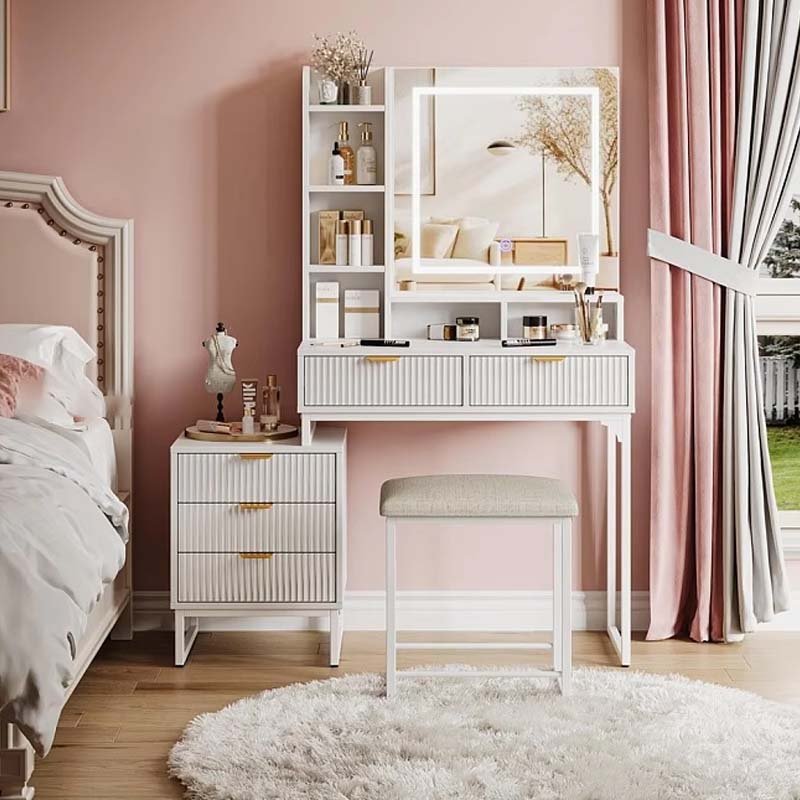
Understanding Low-Emission Adhesives11 in Plywood
Many furniture makers used to rely on urea-formaldehyde resins. These adhesives worked well, but they released volatile organic compounds (VOCs), such as formaldehyde, which can cause headaches, allergies, or worse health issues over time. Today, things have changed. More manufacturers now use low-formaldehyde or CARB-compliant glues12 in their plywood. So, what does this really mean for you?
What Are CARB and European Emission Ratings?
CARB stands for California Air Resources Board. Its Phase 2 standard sets strict formaldehyde emission limits. Europe uses similar standards—E0 and E1 being the tightest. Here’s a quick comparison:
| Certification | Max Formaldehyde Emission (mg/L) | Region |
|---|---|---|
| CARB Phase 2 | 0.05 | USA (California) |
| E0 | ≤ 0.05 | Europe |
| E1 | ≤ 0.124 | Europe |
You might see one of these on a plywood label. If so, you’re looking at a product that has been tested and found safe, especially for indoor use. I’ve walked furniture showrooms and asked about certification. When a salesperson points to CARB Phase 213 paperwork, I know the product will contribute less to indoor air pollution.
Why Does Off-Gassing Matter Indoors?
Every time I bring a new piece of plywood furniture home, the first thing I notice is the smell. That “new furniture” scent is often a sign of volatile chemicals escaping, not just glue. In a closed room, these gases can build up, and sensitive people may immediately feel discomfort.
It is different when I select plywood with CARB or E0/E1 certifications14s. There’s much less odor. The room airs out quickly, and I do not experience headaches or watery eyes.
Compliance and Global Health Standards
Global health agencies know the risks, so they require emission testing before plywood is sold in many regions. This protects everyone—people at home, guests in hotels, even workers setting up offices. The rules are clear: if a plywood product meets these limits, it is safer. If not, it could be refused entry, or worse, endanger those who use it.
Market Benefits of Certified Plywood
I have also found that CARB and E0/E1 certifications do more than promise safety. They make plywood more marketable for makers. Why? People everywhere are now more aware of indoor air quality15. Buyers—especially parents or those with allergies—want reassurance that what they bring home is safe.
Product listings now highlight these ratings. In my experience, listings that mention “CARB Phase 2 compliant” attract more attention. Sellers also find it easier to introduce these products in eco-conscious regions or high-end projects where health rules are tight.
Conclusion: Prioritize Health, Not Just Looks
The next time you shop for plywood-based furniture, look for CARB Phase 2 or E0/E1 marks. These signals mean safer air, healthier homes, and better peace of mind. In my home, I always check labels before buying. It is a small step that pays big health dividends.
Low-formaldehyde plywood with CARB Phase 2 or E0/E1 certification emits fewer harmful chemicals, making it safer for indoor use.True
Certified low-formaldehyde plywood uses adhesives with minimal emissions, reducing health risks from indoor air pollution.
All plywood, regardless of certification, releases the same amount of formaldehyde into indoor air.False
Emission-certified plywood is specifically tested to release significantly less formaldehyde compared to uncertified products.
5. Why Do Sanded Plywood Faces Matter in Furniture?
Rough plywood creates headaches—extra work, unpredictable finishes, and delays. Smooth, calibrated panels solve these problems. Smart buyers choose solutions that speed up production and ensure reliable finishing results.
Sanded and calibrated plywood faces allow you to skip extra prep and achieve smooth, consistent finishes fast, making project completion easier and more reliable.
The Crucial Difference: Sanded and Calibrated Faces
When I first started working with furniture grade plywood16, I underestimated how crucial the sanding and calibrating process was. Early on, I spent long hours re-sanding rough panels, hoping for a flawless surface. Results with stain or clear finish were hit or miss. Then, I discovered the value of pre-sanded, calibrated faces. This one feature changed my approach to finishing forever.
Let’s break down why sanded and calibrated plywood faces17 matter so much:
Direct Use for Finishing
Fully sanded faces mean you can stain, paint, or clear-coat right out of the box. Since the entire panel receives careful, even sanding at the factory, you do not need to rework the surface. This saves time and makes your workflow more efficient.
I found that unsanded panels forced me to spend hours prepping before I could even start applying finishes. Sanded faces removed this step. My project timelines shortened, and my confidence in each panel grew.
Consistency Across Panels
Another benefit is predictable finish absorption. An uneven surface or variable sanding creates blotchy stains and paint issues. With factory-calibrated sanding, every square inch of the plywood offers the same texture and porosity.
Let me illustrate with this table:
| Finish Type | Unsanded Plywood | Sanded & Calibrated Plywood |
|---|---|---|
| Stain | Uneven, blotchy | Even, rich color |
| Clear Finish | Rough, dull | Smooth, glossy |
| Paint | Poor adhesion | Strong, clean look |
I have experienced first-hand panels that looked identical before finishing, but after staining, the differences became obvious. Sanded and calibrated plywood eliminated these surprises.
Faster Time-to-Market
If you are building for clients or aiming to launch your own product, speed counts. Pre-sanded faces mean you head straight to finishing without delays. For me, this meant competing in markets that demanded quick turnaround.
Moreover, sanding each panel by hand causes fatigue and increases the risk of error. Consistency suffers when fatigue sets in. Machine-sanded, calibrated plywood solves this problem.
Common Questions Answered
Does factory sanding replace all hand sanding?
In most cases, yes. The surface comes ready for finish. Sometimes, you may wish to sand edges or handle fine details by hand, but faces require minimal, if any, additional work.
Will I get better results with pre-sanded plywood?
Based on experience, absolutely. Finishes are smoother, stains are richer and more even, and mistakes become rare.
Making the Smart Choice
When I switched fully to sanded and calibrated furniture plywood, my projects improved. I spent less time sanding, had fewer finish failures, and delivered results that clients noticed. In competitive markets, every hour and every detail counts. Pre-sanded faces give you a critical edge, letting you focus on craftsmanship and creativity, rather than fixing basic surface issues. For any finisher, builder, or designer, this upgrade pays for itself quickly.
Sanded and calibrated plywood faces allow for efficient, even finishing with minimal additional prep work.True
The content clearly states that factory-sanded plywood faces enable direct staining or painting, saving time and delivering consistent results.
Rough, unsanded plywood panels require no extra preparation before applying stain or paint.False
The blog explicitly mentions that rough panels demand significant prep work, and failing to sand them leads to poor, uneven finishes.
6. Is Furniture Grade Plywood Strong and Attractive?
Many struggle to find a material that looks premium and stays strong. Poor choices may lead to weak furniture or unattractive finishes. Furniture grade plywood18 may be the solution.
Furniture grade plywood is both visually appealing and strong. Many choose it for visible cabinetry, load-bearing furniture parts, and any area where appearance matters. Its surface is smooth, and it accepts custom finishes.
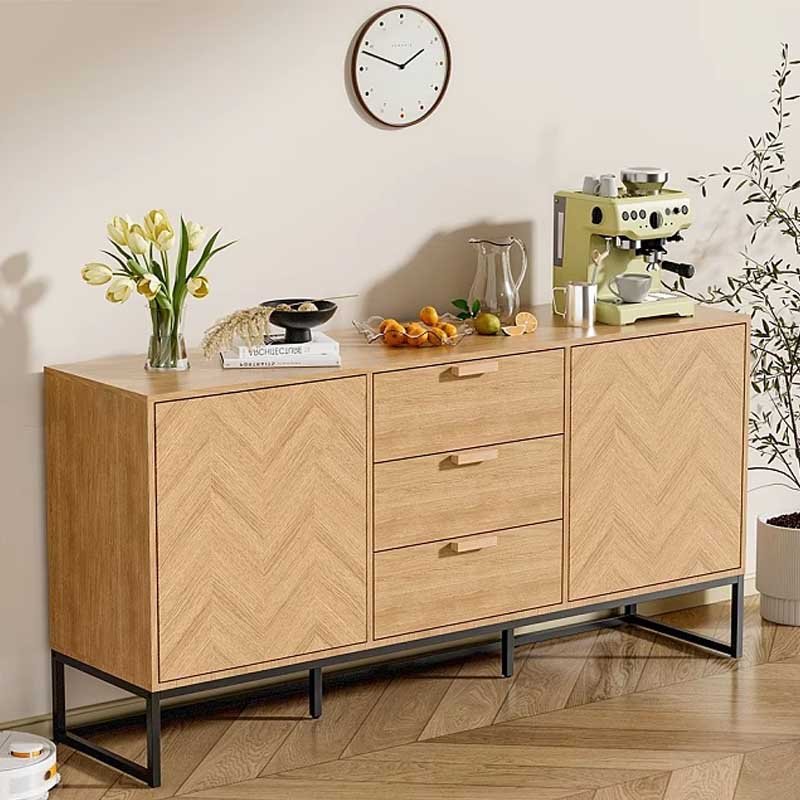
Unpacking the Dual Role of Furniture Grade Plywood
Furniture grade plywood has a reputation for versatility. When I built my first bookshelf, I wanted it to look great in my living room and also hold heavy books. I chose furniture grade plywood for both reasons. The results impressed me.
Decorative Value19: First Impressions Matter
First, let's see why this plywood suits high-visibility furniture:
- The visible faces have a smooth, even grain. Manufacturers use select timber veneers on the best sides.
- Cabinet doors, drawer fronts, and table tops all benefit from its uniform look.
- Fresh from the mill, the surface is ready for paint, stain, or clear finish.
- Edge treatments let the plywood blend with solid wood details or stand out on its own.
| Finish Options | Effect on Appearance | Typical Uses |
|---|---|---|
| Clear lacquer or varnish | Shows natural wood grain | Dining tables, shelves |
| Paint (solid color) | Custom color surface | Children's furniture, desks |
| Veneer (exotic or domestic) | Mimics any wood species | High-end cabinets, display units |
| Laminate | Durable, varied textures | Office furniture, countertops |
Good decorative plywood20 makes a difference in any room. Its appearance stays consistent across pieces. This evenness is hard to get with many solid woods.
Structural Strength: Built to Last
Furniture grade plywood is more than looks. It holds up under real life use.
- Multiple layers, called plies, run the grain in different directions. This means the board does not bend easily.
- It resists warping under heavy loads. I used it once for a wide shelf, and the middle stayed straight for years.
- Joints made with plywood stay tight. Screws and fasteners grip well along the layers.
- Solid wood may crack over time. Quality plywood, if dry and sealed, remains stable.
Compatibility: The Key to Customization
Build with furniture grade plywood, and you get many finishing options:
- Add solid wood edges for a classic look.
- Cover the main surfaces with fancy veneers or even laminate for a modern style.
Many designers rely on plywood for both its underlying strength and its finish flexibility. You can match new furniture to old woodwork, blend modern and classic looks, or build pieces that look high-end on a budget.
Summary Table: Why Use Furniture Grade Plywood?
| Feature | Decorative Roles | Structural Roles |
|---|---|---|
| Surface Quality | Smooth, grade-matched | Takes finish evenly |
| Core Strength | Stays flat, sturdy | Holds weight, resists bend |
| Finish Flexibility | Edge-band, veneer, paint | Joinery, long spans |
I trust furniture grade plywood for most home projects. It always solves both the “looks” problem and the “strength” challenge. Its balance of structure and visual appeal keeps it popular for furniture making, room renovations, and even custom built-ins21. Anyone wanting a durable but attractive piece should consider its advantages.
Furniture grade plywood is both visually attractive and structurally strong, making it ideal for high-visibility and load-bearing furniture.True
The content emphasizes that furniture grade plywood is chosen for its appealing finish and strength, suited for both decorative and structural applications.
Furniture grade plywood has a rough surface that cannot accept finishes or veneers.False
The content states that its surface is smooth, ready for paint or veneer, which makes it suitable for various finishes and custom appearances.
7. What Plywood Types Fit Any Design Style?
You want your plywood furniture22 to match your vision, but the choices seem endless23. It is overwhelming to pick what looks best and performs well. Let’s walk through the options so you feel confident.
The wide variety in furniture grade plywood means you can match nearly any style or functional need. From exotic wood faces to special-form panels, multiple options allow for custom solutions without sacrificing quality.
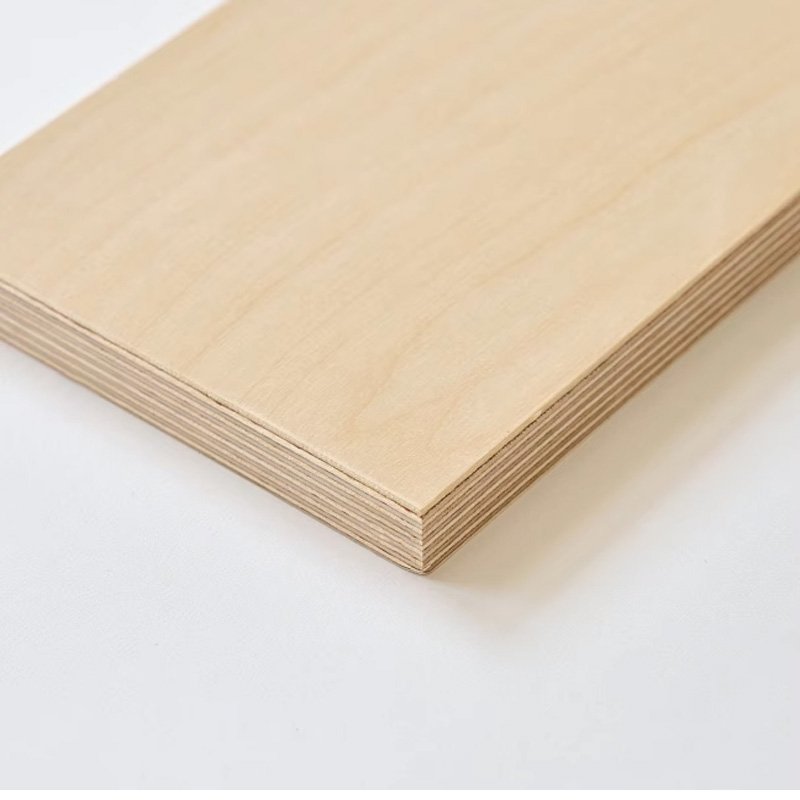
Wide Variety in Wood Species24
Furniture projects begin with the look. I noticed many people focus first on the species of wood. You can get face veneers in classic oaks and modern maples, or go for something upscale with walnut. Each species changes the grain, color, and feel.
- Oak: Strong grain, feels traditional.
- Maple: Smooth, light, fits modern themes.
- Birch: Clean, subtle, very versatile.
- Walnut: Deep color, very high-end.
There are many domestic choices and some imported ones too, in almost every color. I remember when I wanted to match an old chair set. The panel store offered four different types. It surprised me how close the birch and maple looked, but the oak stood out for its texture.
Adjusting Quality: Grades Matter
Face veneers25 are important, but the grade on the back of the plywood sets it apart for different uses. Grades such as A/B, A/1, or B/2 reflect how many blemishes appear on either side.
| Grade | Face Quality | Back Quality | Typical Use |
|---|---|---|---|
| A/B | Clear face | Minor imperfections | High-end furniture |
| A/1 | Premium face | Premium back | Visible sides or open shelving |
| B/2 | Acceptable face | Moderate back | Cabinets or unseen backs |
Choosing the right grade can save money. For example, when only the front side is visible, picking A/B instead of A/A makes sense. The back looks fine for structural support but does not add extra cost.
Special Applications: Beyond Flat Panels
Modern furniture design sometimes needs more than flat sheets. There is a bendy plywood26 option. This works for curved fronts, rounded reception desks, or creative wall details. I once built a desk with a gentle curve. Normal plywood would not bend; the bendy type saved hours and made for seamless lines.
Multi-core plywood panels also exist. They give consistent thickness, smoother finishes, or more strength. This is helpful for projects needing lots of different joinery or precise thickness, like custom bookshelves or wall panels.
Matching Aesthetic Needs with Technical Solutions
Design choices are personal. Still, furniture grade plywood’s range means anyone can find what fits. High-grade faces look professional. Good backs save cost but still support strength. Specialty types like bendy panels open up a world of creative options.
If you are planning a project, take a moment and look at the wood samples. See which one feels right in your space. The range and flexibility of furniture grade plywood can help you realize almost any design.
Furniture grade plywood is available in a wide range of wood species and grades to match different design styles and functional needs.True
The content explains that furniture grade plywood comes in various species and grades, offering versatility for nearly any design requirement.
All plywood panels are flat and cannot be used for making curved furniture pieces.False
The content specifically mentions bendy plywood, which is designed for curved applications in modern furniture design.
8. How Do Grading Standards Guarantee Plywood Quality?
Confused by plywood quality claims? Grading standards clarify what to expect and erase uncertainty. They solve misunderstandings by providing clear benchmarks that everyone can follow.
Industry grading standards for furniture-grade plywood ensure clarity, consistency, and trust by setting measurable performance and quality benchmarks. These standards help buyers compare options directly and negotiate product expectations with confidence.
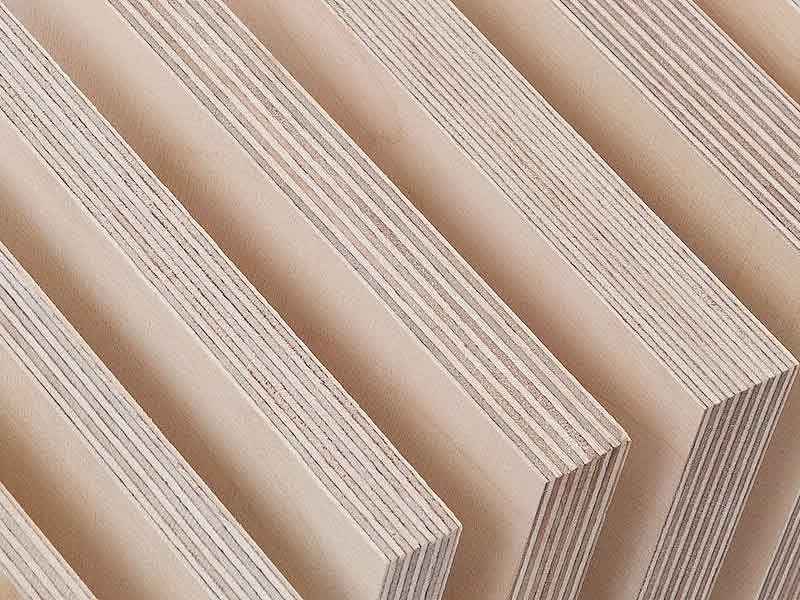
What Are Furniture-Grade Plywood Grading Standards27?
Furniture-grade plywood does not have just one global standard. Suppliers rely on systems like ANSI/HPVA28 (North America), BS (Britain), or EN (Europe). Each system uses grades for face quality, core durability, and emissions. These standards use precise terms and categories. Grades—like A, B, C, and D for faces, or E1 and E2 for emission—help us know what exactly is in the package.
I learned early in my woodworking experience that, without these benchmarks, deals would often fail. One time, I thought a plywood labeled “premium” would be flawless. The delivered panels had visible knots and color patches. After that, I insisted on specifying HPVA grade A for any visible faces. Standards like this solved my headaches.
The table below shows how grades align across major systems:
| Feature | ANSI/HPVA | BS/EN |
|---|---|---|
| Face Grade | A, B, C, D | B/BB, BB/BB, BB/CP |
| Core Quality | Excellent, Standard | Class 1, 2, 3 |
| Emission Level | NAF, ULEF, CARB II | E1, E2 |
Why Do These Grading Standards Matter?
Accuracy in product descriptions is important. For buyers, the promise of “grade A” means clean surfaces, uniform color, and no major repairs. For suppliers, grades reduce disputes. The terms are clear enough for both sides to understand. Negotiating contracts without standardized grades allowed vague terms like “good enough” to sneak through. Now, grades act as a shared language.
Consistency is another reward. Plywood from different factories—if made to, say, BS-EN-314 standards—will look and perform the same. This consistency stops surprises, whether panels are shipped nearby or across the globe.
Another benefit is health and safety. Emission grades like E1 or CARB II limit the amount of formaldehyde in plywood. This helps buyers select panels that keep indoor air safe.
How Do Grading Systems Help with Procurement?
Buyers and suppliers often come from different backgrounds. Without a standard, it is easy to misunderstand. Standardized grading creates trust. A panel labeled “EN 636-2” can be judged on face without extra explanation. Buyers can compare prices knowing that one supplier’s “A” is equal to another’s.
Even during negotiation, clear standards help. If the panels do not meet grade, the buyer refers to the contract—which is backed by the industry grading sheet. This gives both sides a fair place to stand.
Summary Table: Benefits of Grading Standards
| Benefit | Detail |
|---|---|
| Transparency | Buyers know what quality to expect |
| Consistency | Suppliers match the same expectations |
| Clarity in Negotiation | Contracts specify exact requirements |
| Safety and Performance | Emissions and strength assured |
I have seen that working with graded plywood cuts the number of disagreements by half. It makes communication simple. It reduces costly mistakes. Industry grading standards are a tool I will not work without again.
Grading standards for plywood ensure consistency, transparency, and safety by specifying clear quality benchmarks and emission levels.True
The content highlights that grading standards outline requirements for appearance, durability, and emissions, allowing buyers and suppliers to have clear expectations and ensure product safety.
All plywood around the world is evaluated under a single, universal grading standard.False
The content explains there is no global standard; instead, different regions use systems like ANSI/HPVA, BS, or EN.
Conclusion
Furniture grade plywood combines superior veneer quality, stable core construction, low emissions, and precise calibration, ensuring reliability, safety, and aesthetic excellence for high-quality furniture manufacturing.
-
Learn how to spot superior surface and veneer quality to make informed choices for your woodworking projects. ↩
-
Explore this link to understand how high-quality veneers enhance the beauty and durability of your woodworking projects. ↩
-
Explore this link to understand the advantages of using furniture grade plywood for durable and long-lasting furniture. ↩
-
Explore the advantages of Baltic birch plywood, known for its durability and strength, making it ideal for high-quality furniture. ↩
-
Learn why a solid core is crucial for screw-holding and edge integrity, ensuring long-lasting furniture performance. ↩
-
Understanding core construction can help you choose durable furniture that stands the test of time. ↩
-
Exploring the benefits of top-quality plywood can guide you in selecting long-lasting and aesthetically pleasing furniture. ↩
-
Understanding the significance of precision can enhance your woodworking skills and improve project outcomes. ↩
-
Exploring the advantages of furniture-grade panels can help you choose the best materials for your projects. ↩
-
Explore this link to understand how furniture-grade panels enhance joinery quality and efficiency, ensuring a professional finish. ↩
-
Explore this link to learn how Low-Emission Adhesives can improve indoor air quality and protect your health. ↩
-
Discover why CARB-compliant glues are essential for safe furniture and how they meet strict emission standards. ↩
-
Understanding CARB Phase 2 certification can help you choose safer furniture, ensuring better indoor air quality for your home. ↩
-
Learn about E0/E1 certifications to make informed choices for healthier indoor environments, especially for sensitive individuals. ↩
-
Discover strategies to enhance indoor air quality, making your home safer and more comfortable for everyone. ↩
-
Learn about furniture grade plywood and its significance in achieving high-quality finishes in woodworking projects. ↩
-
Explore the advantages of using sanded and calibrated plywood faces for a flawless finish and efficient workflow. ↩
-
Explore this link to understand how furniture grade plywood can enhance both aesthetics and durability in your furniture projects. ↩
-
Discover insights on decorative value and its significance in furniture design, ensuring your pieces are both functional and visually appealing. ↩
-
Discover how decorative plywood can transform your space with style and consistency, making it a popular choice among designers. ↩
-
Discover expert tips on designing custom built-ins that enhance your space and utilize furniture grade plywood effectively. ↩
-
Explore this link to discover various plywood furniture options that balance style and performance, helping you make an informed choice. ↩
-
This resource will guide you on how to simplify your selection process, making it easier to find the perfect match for your vision. ↩
-
Exploring this link will enhance your understanding of wood species, helping you choose the best for your furniture projects. ↩
-
This resource will provide insights into face veneers, crucial for making informed decisions in your furniture design. ↩
-
Explore this link to understand how bendy plywood can enhance your furniture designs with curves and creativity. ↩
-
Understanding these standards is crucial for making informed purchasing decisions and ensuring quality in your woodworking projects. ↩
-
Exploring ANSI/HPVA will provide insights into reliable grading systems that ensure you get the quality you expect in plywood. ↩
